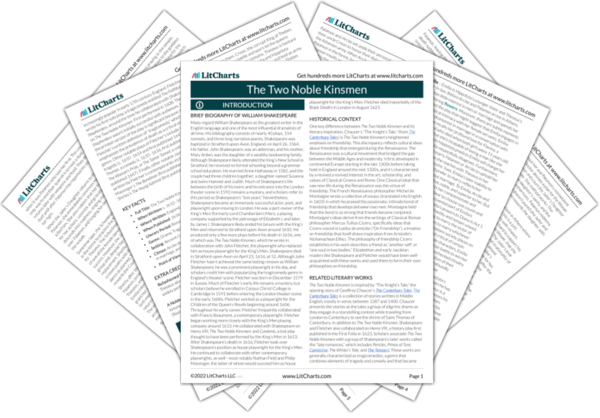Wreaths symbolize victory and fertility. This symbolism has roots in Greek mythology. In one myth, Zeus’s son, Apollo (the god of life and light), falls in love with Daphne, a nymph. Apollo chases after Daphne, who pleads with her father, the river god Peneus, to help her. Peneus turns Daphne into a laurel tree, thwarting Apollo. From that day forth, Apollo wears a laurel wreath to honor Daphne. The Ancient Greeks awarded laurel wreaths to victorious poets, athletes, and warriors. The Ancient Romans used wreaths to honor military victories, as well. In Act 5, Scene 4 of The Two Noble Kinsmen, Theseus awards Arcite with a garland after Arcite defeats Palamon in battle. Later, when Pirithous recounts Arcite’s fatal accident, he notes how Arcite initially manages to stay mounted atop his mad horse but falls after the commotion causes his garland to fall from his head. This detail symbolizes Arcite’s fateful fall from victory.
The Ancient Greeks also associated wreaths with fertility and the changing seasons. The round headdresses, made of flowers, leaves, and grasses, were often worn on holy days and other celebrations. They believed that wearing a wreath could bring the wearer closer to a particular god. For example, in The Two Noble Kinsmen, Emilia wears a wheaten wreath when she prays to Diana, a goddess associated with virginity, about her impending marriage. When Emilia prays that the cousin who loves her best be the one to remove her wheaten garland, she means that she wants that man to be the one who takes her virginity. In this way, wreaths are associated with belief in divine Providence: characters wear wreaths to honor or be closer to the gods who control their fates.










